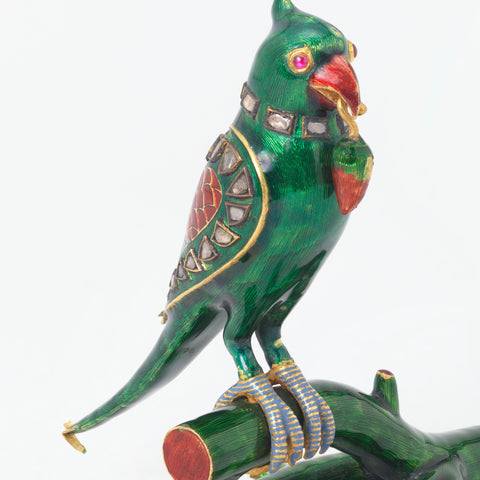
Polki Cut
The world’s oldest diamond cut (that actually involved human interaction with the stone) was not cut at all; it was simply polished. Well, technically some of them were cleaved. While there is no solid evidence of when the polki cut was first introduced, there is a strong argument that someone polished a diamond before the table cut was introduced in thirteenth century.
There are two forms of a diamond that many people would qualify as a “polki cut”. The first and most commonly seen of these is what a lot of people refer to as a “diamond slice”. This is a type of diamond excess that is cleaved or sawed off of the top and/or bottom of large stone as it is being shaped. Instead of letting it go towards industrial purposes or go to waste, some jewelers, particularly in India (the diamond cutting capital of the world), will turn these slices into jewelry designs.
The “diamond slice” form of the polki cut is not mentioned explicitly until examples are seen in the writings of Jean-Baptiste Tavernier, but there are written accounts to suggest that people in India were cleaving diamonds as far back as the first millennium BCE.
Many other polki cut diamonds are kept in their original shape, and polished to a point where they allow someone to experience the beauty on the inside of the stone. Most of these diamonds are not the pure octahedron that was used for the point cut. These stones were more uniquely shaped, and then after polishing, jewelry was made around the unique shape of the stones so that the diamonds could be worn.

 A bird made of gold decorated with Enamel and Polki Cut Diamonds - Circa 1700s - Credit: Smithsonian
A bird made of gold decorated with Enamel and Polki Cut Diamonds - Circa 1700s - Credit: Smithsonian